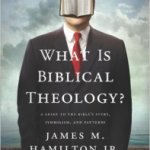Sometimes we approach the Bible like dining at a smorgasbord restaurant. At a smorgasbord there is no order or progression to the meal, you just pick what you want. Similarly, we can read a passage or story without thinking about where it fits in the story-line of the Bible. We gravitate to what we want to hear or what is comfortable. When we eat only the food we like at a smorgasbord, it can result in an unhealthy diet and indigestion. Likewise, we can develop an unhealthy theology and theological indigestion when we read the Bible and ignore the story-line. The Bible is more like a multi-course meal designed by a dietitian for our health and enjoyment. Each course prepares the taste buds for the next. The sequence is just as important as each item.
Each story and passage in the Bible is a part of the overall metanarrative of the Bible and placed in sequence by the Holy Spirit. The meaning is understood in the context of its time and place in the Bible’s story-line. Robert Strauss writes,
The parts of the biblical story cannot be isolated or separated from the contemporaneous context of the metanarrative if the hearer is to fully understand the meaning of the component parts. Ryken writes, “we must … describe and interpret the details accurately, but it is finally the whole story that embodies the theme.” In other words, it is imperative that we see the whole of Scripture as a complete system where the whole is greater than the sum of the parts. In systems thinking the parts cannot be understood in isolation from the whole.
Robert Strauss, Introducing Story-Strategic Methods, 67.
As we facilitate discovery Bible studies and tell biblical stories, it is important that we locate them in the biblical story-line or metanarrative. Isolated from the rest of the Bible, individual passages and stories lose their anchor and are easily misunderstood within an alternative metanarrative. The facilitator or story teller needs to provide an explanation of the biblical metanarrative. Some insist that teaching should not be part of discovery Bible studies or storytelling, but that is a false dichotomy. I agree with Robert Strauss when he writes,
This false dichotomy is hindering the best practice of storytelling. Exposition and storytelling are not juxtaposed. In actuality they work hand in glove. A thesis of the book is that exposition and storytelling are inextricable in effective intercultural communication in the global context. We tell to teach. If stories are told apart from exposition, which they are in some quarters, misunderstanding is inevitable.
Introducing Story-Strategic Methods, 76.
Providing a brief overview of the Bible story-line does not prevent learners from discovering it for themselves over time as they study the whole of Scripture. What it does prevent is the misinterpretation of the Bible. Stories don’t stand alone. A single story needs a larger story, a metanarrative, in which to locate its meaning. If we do not explain the biblical metanarrative, an alternative will take its place and meaning will be distorted.
Introducing a passage for discovering Bible study, or for telling a Bible story, with a short overview of its place in the Bible story-line will not hamper discovery. Such an introduction will guide the discussion toward God’s intended meaning in the unfolding of his plan. As participants continue to study the Bible, they will see this progression for themselves.
In the next post on teaching, we will explore metanarrative and worldview.










2 thoughts on “Teaching the Bible Story-line”